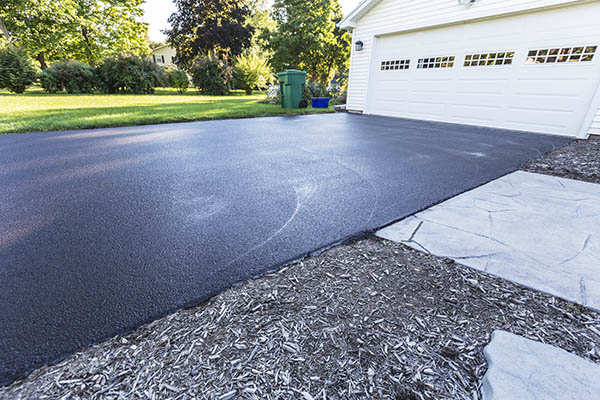Hot Mix Asphalt: A Lasting Remedy for Sidewalk
Warm Mix Asphalt (HMA) has emerged as a leading lasting choice for pavement options, supplying a myriad of innovative technologies and ecological benefits. Its ability to recycle materials and reduce power intake presents an engaging situation for its adoption in road building tasks. The long-lasting performance and longevity of HMA make it a favored alternative for facilities development. As the need for environmentally friendly construction techniques expands, checking out the nuances of HMA's sustainability can offer important understandings into the future of pavement solutions.
Environmental Benefits of Hot Mix Asphalt

In Addition, Hot Mix Asphalt aids to reduce city heat island impacts. Its dark color takes in sunshine, decreasing the quantity of heat showed back right into the atmosphere contrasted to lighter-colored pavements. This can reduce ambient temperature levels in urban locations, decreasing the need for cooling and eventually lowering energy usage.
Furthermore, Hot Mix Asphalt adds to boosted stormwater monitoring. Its porous nature allows water to reenergize and penetrate the sidewalk groundwater products, reducing runoff and the risk of flooding. These environmental benefits make Hot Mix Asphalt a sustainable option for paving freeways and roadways.
Power Efficiency in HMA Production
Is energy effectiveness a crucial aspect in the manufacturing of Warm Mix Asphalt (HMA)? Absolutely. Power plays a considerable duty in the manufacturing of HMA, impacting both cost and environmental sustainability. One vital aspect of energy performance in HMA production is the usage of cozy mix asphalt (WMA) modern technologies (hot mix asphalt). WMA permits for the mixing and placement of asphalt at reduced temperature levels contrasted to conventional hot mix asphalt, resulting in reduced power intake during manufacturing. This procedure not only reduces fuel usage however additionally lowers greenhouse gas exhausts, making it a much more environmentally friendly option.
Furthermore, improvements in plant modern technologies have actually led to more energy-efficient HMA production processes. By optimizing energy usage in HMA production, the industry can decrease its carbon impact while maintaining high-grade pavement materials.
Recyclability of Warm Mix Asphalt
The recyclability of Warm Mix Asphalt (HMA) is a pivotal facet of its sustainability and long-term environmental influence. HMA is one of the most recycled products in the USA, with over 100 million lots of recovered asphalt sidewalk (RAP) being recycled yearly in new sidewalk building and construction. Recycling HMA supplies several environmental advantages, such as reducing the requirement for virgin products, lowering power intake during production, and decreasing the amount of waste sent out to land fills.
The process of Learn More recycling HMA involves milling the existing pavement, squashing it right into smaller pieces, and blending it with brand-new accumulation and asphalt binder to produce a recycled mix. This recycled mix can often perform as well as or perhaps much better than traditional HMA, while calling for fewer resources and producing lower greenhouse gas emissions. By integrating RAP right into brand-new sidewalk jobs, road agencies can conserve natural deposits, lower prices, and lessen the ecological footprint of road construction and maintenance tasks. On the whole, the recyclability of HMA plays a significant role in promoting sustainable techniques within the sidewalk market.

Long-Term Efficiency of HMA
Asphalt sidewalks show longevity and strength over a prolonged period, showing the long-lasting efficiency of Hot Mix Asphalt (HMA) The durability of HMA can be associated to its capability to stand up to hefty website traffic why not look here lots, rough climate condition, and the impacts of aging. Research studies have actually shown that well-designed and correctly constructed HMA pavements can last for 20 years or even more with normal upkeep. The secret to maximizing the long-term efficiency of HMA hinges on utilizing premium materials, following best techniques in building and construction, and applying efficient maintenance approaches. Appropriate drain, routine examinations, and prompt repair work are important for preserving the architectural stability of HMA pavements with time. In addition, developments in find more info HMA technology, such as using polymer-modified binders and warm mix asphalt, have additionally improved the sturdiness and longevity of HMA sidewalks. By prioritizing top quality building and upkeep methods, HMA continues to prove itself as a lasting and affordable remedy for resilient sidewalk facilities.

HMA: Sturdiness and Sustainability
Demonstrating both durability and sustainability, Warm Mix Asphalt (HMA) has come to be a foundation in the construction of durable pavement frameworks - angled parking. HMA's durability originates from its ability to hold up against heavy loads, harsh weather, and high web traffic volumes, making it a trusted choice for roads, freeways, and airport paths. The structure of HMA, which typically includes aggregates, binder, and filler, plays an important duty in improving its longevity and resistance to tear and put on
In addition, HMA's sustainability hinges on its recyclability and energy-efficient production process. The ability to recycle reclaimed asphalt pavement (RAP) in brand-new HMA mixtures decreases the need for virgin products and minimizes the environmental influence of sidewalk construction and maintenance. In addition, the power efficiency of producing HMA hinges on its reduced blending temperature levels compared to other pavement materials, causing lowered power consumption and greenhouse gas discharges.
Final Thought
To conclude, warm mix asphalt (HMA) provides a lasting solution for pavement with its environmentally friendly qualities. HMA's recyclability, energy effectiveness in production, and long-lasting longevity make it an environment-friendly selection for roadway construction. By conserving natural sources, lowering waste, and decreasing greenhouse gas exhausts, HMA plays a critical duty in advertising sustainability in framework advancement. Its capability to alleviate city warmth island results better emphasizes its value in producing durable and environmentally conscious pavement systems.
HMA is one of the most recycled materials in the United States, with over 100 million tons of redeemed asphalt pavement (RAP) being recycled every year in new sidewalk construction.The process of reusing HMA includes grating the existing sidewalk, crushing it right into smaller items, and mixing it with brand-new aggregate and asphalt binder to develop a recycled mix.Asphalt sidewalks demonstrate sturdiness and strength over an extended period, showing the lasting performance of Warm Mix Asphalt (HMA) Furthermore, advancements in HMA technology, such as the use of polymer-modified binders and warm mix asphalt, have further improved the resilience and long life of HMA pavements. The capability to recycle recovered asphalt sidewalk (RAP) in new HMA blends lowers the demand for virgin products and minimizes the environmental influence of pavement building and upkeep.